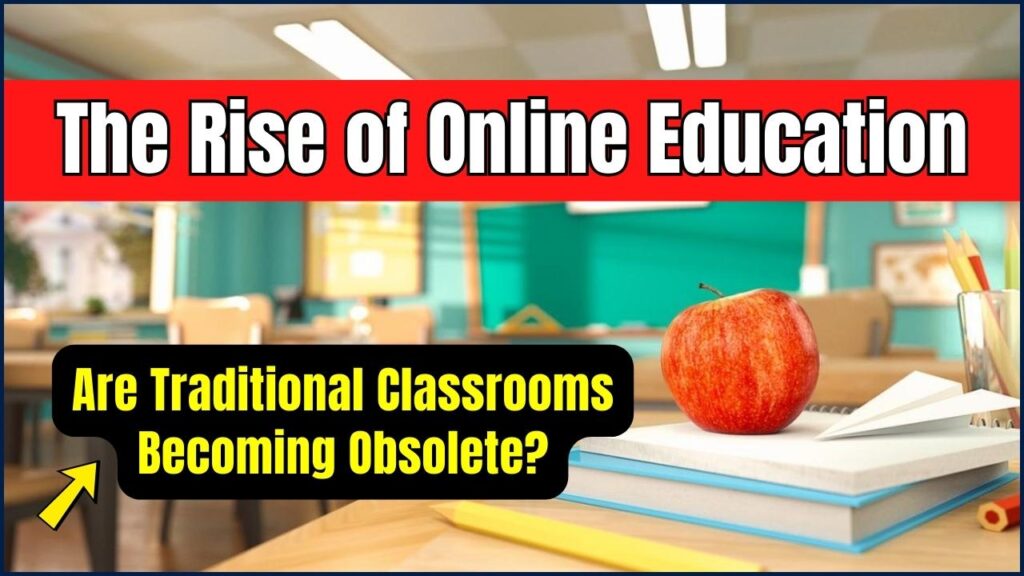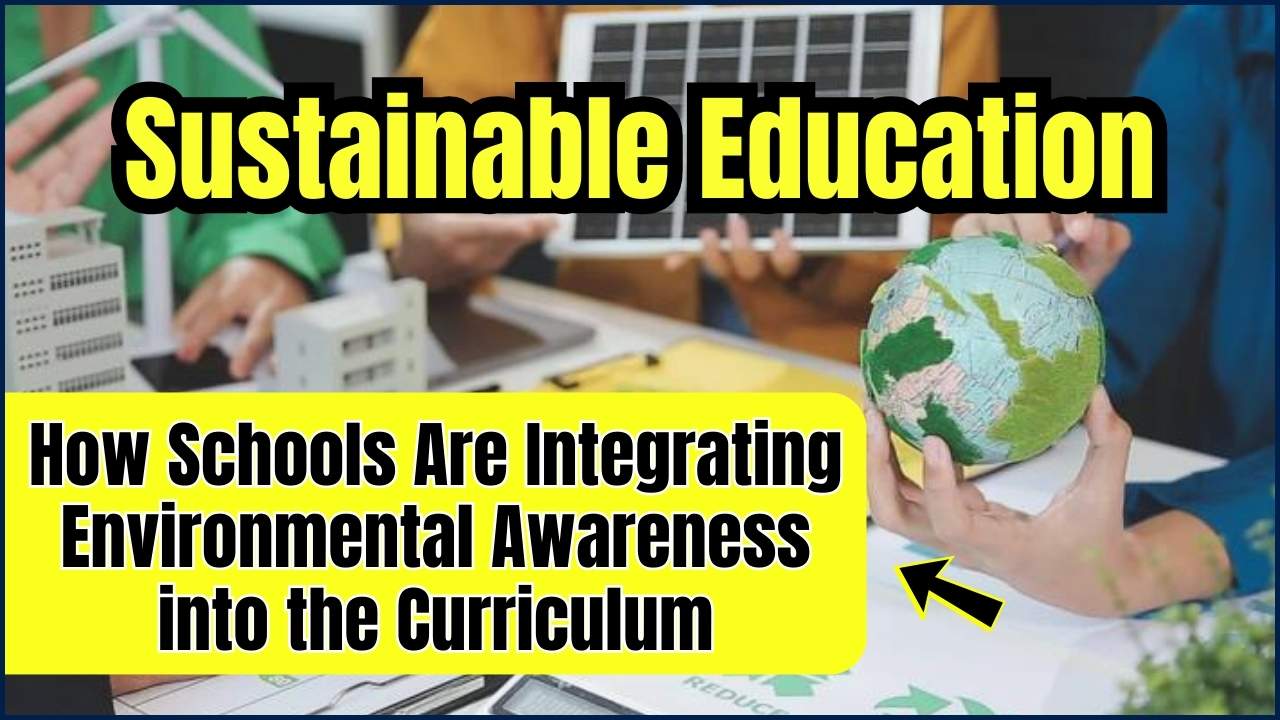The Rise of Online Education: In the last few years, online education has gone from a fringe alternative to a full-blown revolution in how Americans learn. From kindergartners on tablets to working professionals earning MBAs in pajamas, the shift is real. But with all this change, one question’s been hanging in the air: Are traditional classrooms about to become a thing of the past?
Let’s dive deep into the stats, stories, tech tools, and trade-offs behind this big education shift—and figure out what’s really going on with our learning future.

The Rise of Online Education
| Feature | Traditional Classrooms | Online Education |
|---|---|---|
| Learning Style | In-person, teacher-led | Self-paced, digital-first |
| Accessibility | Location-bound | Global, 24/7 access with internet |
| Cost | Tuition, transport, books | Lower or free, pay-per-course models |
| Social Interaction | Daily peer & teacher interaction | Limited or forum/chat based |
| Best For | Holistic growth, early education | Adult learners, working professionals, rural access |
| Innovation Tools | Chalk, whiteboards, labs | AI tutors, gamification, VR labs |
| Official Info | ed.gov | edX, Digital Promise |
Online education isn’t just here to stay—it’s rewriting the rulebook. But that doesn’t mean we’re done with desks, bells, and blackboards. Traditional classrooms still matter, especially for younger kids and hands-on subjects.
The smartest move? Embrace the hybrid model. Let students log in and show up. Let teachers assign digital homework and host classroom debates. In the future, the best learning isn’t either/or—it’s both/and.
The Online Boom: From Niche to Norm
During the pandemic, over 90% of students worldwide were impacted by school closures, according to UNESCO. This was the moment online education exploded. But even post-COVID, the trend didn’t die—it thrived.
The Numbers Don’t Lie
- 43% of college students in the U.S. are enrolled in at least one online course (NCES, 2024).
- The global EdTech market is projected to hit $404 billion by 2025 (HolonIQ).
- Platforms like Coursera and Udemy now serve 100+ million learners.
Whether it’s a 12-year-old learning algebra on Khan Academy or a single mom finishing her degree on SNHU, digital learning has smashed the old boundaries of age, location, and income.
But Wait—Old School Still Has Game
Let’s not hit delete on classrooms just yet. Traditional schools offer things online just can’t replicate—at least not yet.
Face-to-Face Human Connection
In classrooms, there’s eye contact, hand-raising, hallway chats, and body language. That stuff’s essential for:
- Conflict resolution
- Empathy and emotional growth
- Active classroom debates and group projects
Safe Structure for Young Learners
Kids need routines. A set place to learn, a bell schedule, snack time—it matters for attention spans and healthy development.
Hands-On Subjects Need Hands-On Learning
Ever tried doing chemistry labs, mechanical engineering, or music class fully online? It ain’t easy. Schools still dominate in:
- Labs and experiments
- Fine arts
- Physical education
- Early childhood play-based learning
The Hybrid Hustle – Best of Both Worlds
The future of education may not be fully digital—it may be blended.
Enter hybrid learning—a combo of online flexibility and classroom engagement.
How It Works
- Lecture via video → Discussion in class
- Homework via EdTech apps → Projects in school
- Self-paced content → Teacher-led clarification
This model’s been a hit at schools like Arizona State University, Georgia Tech, and even in rural school districts that mix satellite learning with in-person mentors.
Real-Life Success Stories
Minerva University (U.S.-based, globally delivered)
Fully online with rotating global cohorts. Students live in major world cities while learning online from top-tier professors.
BYJU’S (India) + U.S. schools
This EdTech giant collaborates with public school districts to bring interactive math and science learning to underfunded classrooms.
Miami-Dade County Schools (Florida)
One of the first districts to adopt a fully hybrid model post-pandemic—custom schedules based on student learning styles.
Challenges & Gaps in Online Learning
It’s not all smooth sailing in cyberspace.
Digital Divide
Millions of kids in rural or low-income households lack:
- High-speed internet
- Laptops or tablets
- Quiet study spaces
That’s why the U.S. Digital Equity Act is investing over $2.75 billion in broadband and device access for underserved communities.
Motivation & Mental Health
Students report feeling:
- Isolated
- Overwhelmed by screens
- Disconnected from classmates
Teacher Burnout
Educators need serious upskilling to teach online. Not all were trained to juggle chatrooms, quizzes, and Zoom etiquette. Programs like Digital Promise’s micro-credentials aim to fix that.
What About the Job Market?
Here’s a common myth: Employers don’t respect online degrees.
That’s false.
The Truth
According to a 2023 LinkedIn Workplace Report:
- 71% of employers say they value skills over degrees.
- Many top firms like Google, IBM, and Amazon actively recruit from online-only programs like Coursera and Udacity.
What’s Next? AI, VR & Gamification
The next chapter in online education is super futuristic.
Artificial Intelligence (AI)
AI tutors (like Khanmigo by Khan Academy) give:
- Instant feedback
- Personalized lessons
- Homework support
Virtual Reality (VR)
Imagine studying ancient Rome by walking through it in VR. Tools like ClassVR make this possible—even in public schools.
Gamified Learning
Apps like Duolingo, Prodigy, and Minecraft: Education Edition keep students hooked through points, badges, and levels.
FAQs About The Rise of Online Education
Q1: Is online learning cheaper than regular school?
Yes, in most cases. Online platforms don’t have infrastructure costs. Many offer free or low-cost courses, especially for adults.
Q2: Can online learning replace high school or college?
It can supplement and enhance it. But for full social development, a blend of online and in-person is usually best.
Q3: What’s the biggest risk of online learning?
Digital divide and student isolation. Also, not all platforms are accredited or high quality—so vet your sources.
Q4: How can I find legit online courses?
Check for platforms approved by the U.S. Department of Education, or use portals like Class Central.











